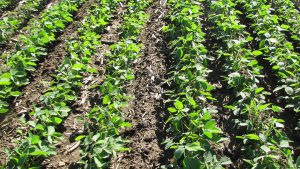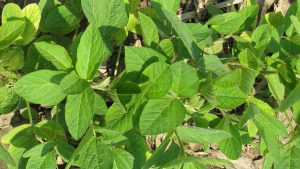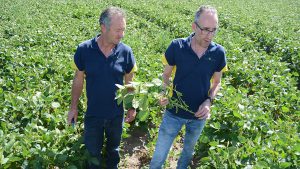Cropside: Sulphur deficiency?
AGRONOMIC INFORMATION FROM ONTARIO'S CROP SPECIALISTS

SULPHUR (S) IS an essential nutrient necessary for plant growth. It’s required for chlorophyll formation and involved in nitrogen fixation. It’s also required to make protein and is important in the formation of oil. In the past it was assumed that soil sulphur supplies were adequate to meet soybeans’ full yield potential. Field experience showed little response to S fertilizer on soybeans. Acid rain and snow provided our soils with sufficient S for most agricultural crops.
In recent decades air-borne sulphur emissions have been drastically reduced in the Great Lakes Basin. This raises the question of whether or not fertilizing soybeans with S is now required in Ontario. Much like nitrogen, the sulphate form of sulphur is highly soluble and is subject to leaching losses. If sulphur is not supplied, especially on sandier soils and low organic soils, deficiencies will occur.
One major challenge in assessing the need for S is that soil tests for S are highly unreliable. Secondly, S deficiency does not cause obvious symptoms in soybeans. S deficient plants may have thin elongated stems with yellowish green leaves that are small, especially at the top of the plant. Symptoms are similar to nitrogen deficiency, except that S is not mobile within the plant so the entire plant may become light green in colour. These symptoms can be caused by a number of other plant stresses including N deficiency or drought, making a field diagnosis difficult.


Thirdly, it’s known that soybeans remove relatively little S compared to other crops such as canola or corn. For instance, soybeans remove only five pounds per acre of S for a 50 bushel per acre crop compared to 15 lbs/ac for canola. Corn removes about 10 lbs/ac. So logically, the likelihood of response is smaller in soybeans than other crops.
Lastly, research trials conducted from 2009 to 2012 by the University of Guelph and OMAFRA showed no economic yield benefit to S fertilizer on soybeans. But much like nitrogen (for grass crops), if no fertilizer is added soil reserves will eventually become low enough that the nutrient becomes limiting.
Are soil reserves low enough now that even soybeans will respond to S? Trials conducted in 2017 by Pioneer in Eastern Ontario showed an average response of 3.1 bu/ac across six trials. Most of the trial locations had sandier soils low in organic matter. It was also a wet spring last year at those locations. This could help explain these positive responses. Purdue University in Indiana has also showed surprising yield responses to S on soybeans. These results have spurred on a number of public and private trials to develop new best management practices.
So, although we do not have enough data at present to recommend S on all soybeans across the province, there is already strong evidence that sandier soil types and low organic matter fields respond well to S fertilizer. Research trials presently underway will give us a definitive answer on the likelihood of a response on heavier textured soils. •




















